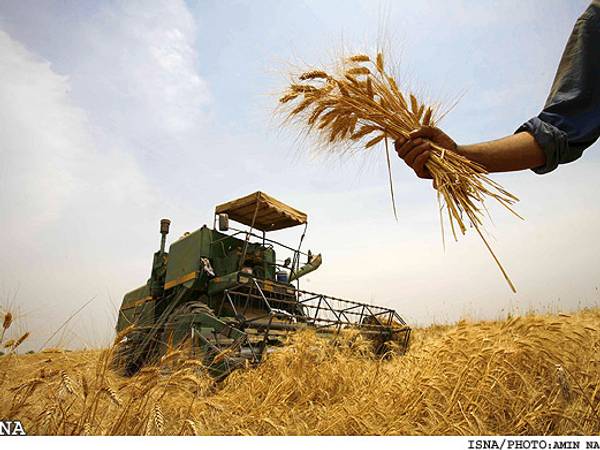The Iranian government’s failure to announce new “guaranteed purchase prices” for wheat and full payment for last year has led to a delay in next season’s cultivation.
Iran's Supreme Leader Ali Khamenei has always encouraged self-sufficiency in wheat production as a strategic crop. The government purchases farmers’ crops at a guaranteed price announced before the beginning of every crop year towards this goal.
Bread, which is heavily subsidized, is a major staple in the Iranians’ diet the shortage of which may instigate massive popular discontent or even protests and riots.
In the past few weeks, government officials have repeatedly claimed that the new prices, which should have been announced by July 22, would be revealed “soon”. But nearly three weeks after the start of Iran's farming year (September 23) confusion still reigns and many wheat producers have not begun planting winter seeds for harvest in spring, unsure whether new rates will justify higher production costs resulting from inflation.
Meanwhile, Arsalan Ghasemi, chairman of the agriculture and food industries committee of the Agricultural Trade Chamber told Fars news agency Friday that the Planning and Budget Organization has not authorized the payment of around 25 percent of the government’s debts to farmers for the crops purchased last year due to its allocated budget having run out.
“Farmers will lose their trust [in the government] due to the Planning and Budget Organization’s approach. This is harmful to self-sufficiency in wheat and production of basic commodities in the country,” he said.
Iran has attained self-sufficiency in wheat production a few times since 2004 but in most years the government has had to import more than half of the country’s wheat required for bread, seed, and food industries. Wheat imports surged to seven million tons in 2013 and a record nine million tons 2021 when domestic crops were hit by the worst drought in the past fifty years.
Iranians consume over 160 kilograms of bread annually and rank second in the world per capita consumption of bread after Turkey. The country requires at least 14 million metric tons of wheat for bread and production of other foodstuff such as pasta.
According to Deputy Agriculture Minister Mojtaba Khayam-Nekouei, the government purchased 9.7 million tons of wheat from farmers at the guaranteed price of 150,000,000 rials per ton (under $500) during the previous crop year. This is roughly competitive with international market prices.
Farmers demand a much higher payment for the current year arguing that Iran’s 50-percent annual inflation has hugely increased all their production costs including labor.
Jafar Hosseini, an advisor to the Chamber of Agricultural Unions, said Friday that the government’s guaranteed price, which it was supposed to announce before July 22, has been set at 195,000 rials per kilo. He said anything less could dissuade farmers from planting. According to Hosseini, other farmers including those producing oil seeds are facing similar problems as wheat producers.
Bread prices have jumped by up to 40 percent in most provinces since March despite officials underlining before that the price of bread was President Ebrahim Raisi’s “redline”. The hike in the price of bread was a result of a government decision to scrap the subsidy for imported wheat, flour and other essential items.
Iran is among the world’s top twenty producers of wheat. The country ranked 12 globally in 2022 with 15 million tons and also a major importer.
In recent years the area under wheat cultivation has increased to around five million hectares nearly 3.5 million hectares of which is rainfed.
